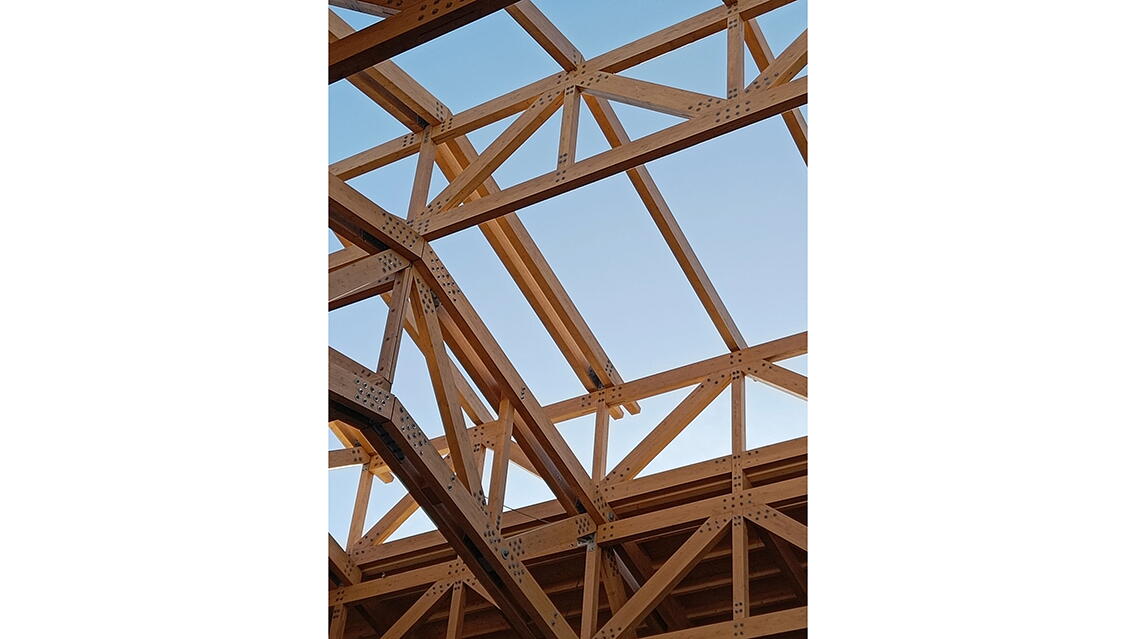Apeldoorn is known as a warm, green city on the Veluwe. Until now, the market square was 'unsociable’ and empty. This has been changed by the Apeldoorn Market Hall, a wooden market hall that can be used for the market and for all kinds of other events, such as fairs or live performances.
Wooden canopy
The Market Hall is a large wooden canopy with a span of about 32 meters. The material used is mainly wood, with steel used only for some junctions. The building is fitted with colored glass, allowing light to 'beam’ in. This makes the square partially covered and suitable for all weather conditions. The total hall measures 35 by 42.5 meters and is about 17 meters high, a real eye-catcher. The roof has a gable roof shape with a partially raised middle roof, also called a lantern. The facade of the raised roof is sealed with glass V-shaped sections, while the lower roof is clad with wooden V-shaped sections. Furthermore, the hall is fitted with bituminous roofing, which ensures that it is protected from the weather.
The design was commissioned by the Municipality of Apeldoorn. Project partners include main contractor Draisma, Heko Spanten, Houtbouw, Adviesbureau Lüning, Van Tetterode Glass Studio, and the architecture by West 8.
BIM
All executing parties, such as the detailed structural engineer, modeler, contractor, manufacturer of laminated timber, and steel supplier, used BIM at a high level. Control was achieved almost entirely through IFC models. The construction site was also fully 3D measured, which was exported to IFC, after which it could be imported directly into the Tekla model. All parts of the entire structure were made entirely on CNC machines, which also required everything from the 3D model to be exported to the various machines in their own language.
Tekla Structures
Tekla Structures was used when creating and using many proprietary components in modeling. This resulted in a model with a high degree of manageability in changing processes, which was a wish or requirement of the architect and chief structural engineer. Changes in the user component were easy to implement in many cases. For prefabricated pre-assembly in the factory of trusses, many assembly codes were included in the 3D model. This resulted in nice, clear drawings for assembly, which significantly reduced the assembly time.
Manufacturability
The entire model was made on LOD400, where we always had to keep an eye on the manufacturability of the machinery but also the assembly sequence. In terms of geometry, there was a clear difference between the timber construction and the steel parts. The timber construction is made up of only square or rectangular elements, while the steel parts use many freely shaped cut sheets in all shapes and sizes. In terms of volumes and weights, it is about 220 cubic meters of wood and about 31 tonnes of steel parts with 47,000 screws and about 13,000 bolts, nuts, and washers.
Sustainability
Apart from some steel junctions, the Market Hall is made entirely of wood. This has the great advantage of being sustainable. Wood grows and converts CO₂ into wood during that growth process. This creates a fantastic ecosystem that converts waste into a sustainable building material. Special roofing protects the hall from the weather. Finally, there are solar panels on the roof.



